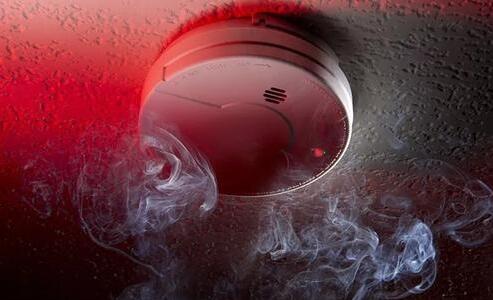In our lives, we often come across a variety of sensors. These sensors help us to identify and detect various potential hazards such as smoke, noise and flooding, and convert them into electrical signals to prevent disasters from happening.Here we will focus on smoke alarms commonly used in the home.
Smoke sensors, also known as smoke alarms or smoke detectors, are capable of detecting smoke generated during a fire. With an internal photoelectric smoke sensing device, they can be widely used in shopping malls, hotels, shops, warehouses, machine rooms, homes and other places for fire safety detection. The smoke alarm has a built-in buzzer and can emit a strong sound when the alarm is activated.
From the intrinsic principle, smoke alarms are used to prevent fires by monitoring the concentration of smoke, and smoke alarms use ionised smoke sensing inside, which is a technologically advanced, stable and reliable sensor that is widely used in various fire alarm systems and has a much better performance than gas resistor type fire alarms. It has a radioactive source of americium 241 inside and outside the ionisation chamber. The positive and negative ions generated by ionisation move towards the positive and negative electrodes under the action of the electric field. Under normal circumstances, the current and voltage in the inner and outer ionisation chamber are stable. Once the fumes have escaped from the outer ionisation chamber. This interferes with the normal movement of the charged particles, the current and voltage will change, destroying the balance between the inner and outer ionisation chamber, and the wireless transmitter will send out a wireless alarm signal to notify the receiving host at a distant location to transmit the alarm information.
Common smoke alarms can be classified as follows.
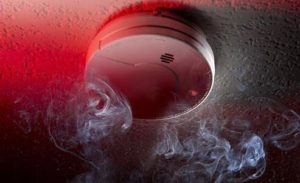
1. Ionic smoke alarm
The smoke alarm internal use of ion smoke sensing, ion smoke alarm is a technologically advanced, stable and reliable sensor, is widely used in the fire alarm system, performance is far better than the gas resistor type of fire alarm.
2. Photoelectric smoke alarm
Photoelectric smoke alarm inside an optical labyrinth, installed with infrared pair of tubes, no smoke when the infrared receiving tube does not receive infrared light from the infrared transmitter tube, when the smoke enters the optical labyrinth, through refraction, reflection, the receiving tube to receive infrared light, intelligent alarm circuit to determine whether the threshold value, if more than the alarm.
Photoelectric smoke detectors can be divided into reduced light type and scattered light type, divided into the following.
(1) Reduced light type photoelectric smoke detector
The detector’s detection chamber is equipped with a light-emitting device and a light-receiving device. Under normal circumstances, the light-emitting device receives a certain amount of light from the light-emitting device; when there is smoke, the light-emitting device emits light to be blocked by smoke, so that the amount of light received by the light-emitting device is reduced, the light current is reduced, and the detector issues an alarm signal.
(2) Scattered light type photoelectric smoke detector
The detector is also equipped with a light-emitting device and a light-receiving device inside the detection chamber. Under normal circumstances, the light receiving device does not receive the light from the light emitting device and therefore does not produce a photocurrent. In the event of a fire, when smoke enters the detection chamber, the light emitted from the light emitting device is diffused due to the effect of smoke particles, this diffused light is received by the light receiving device, which causes the impedance of the light receiving device to change, resulting in a photocurrent, thus transforming the smoke signal into an electrical signal, which is then received by the detector to determine whether an alarm signal is required.
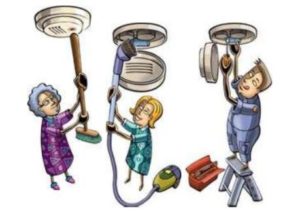
Comparison of the two types of sensor
Ionic smoke alarms are more sensitive to tiny smoke particles and can respond to a variety of smoke in a balanced manner.
The forward-facing photoelectric smoke alarm is more sensitive to slightly larger smoke particles and less responsive to grey smoke and black smoke.
When a roaring fire occurs, there are more tiny particles of smoke in the air, and when smothered, there are more slightly larger particles of smoke in the air.
If a fire occurs and a large number of tiny particles of smoke are produced, the ion smoke alarm will alarm before the photoelectric smoke alarm.
The time interval between these two types of smoke alarms is not large, but these types of fires spread extremely quickly and it is recommended that such premises are better equipped with ion smoke alarms.
Another type of smothering fire occurs after the production of a large number of slightly larger smoke particles, photoelectric smoke alarms will be alarmed before ion smoke alarms, such places are recommended to install photoelectric smoke alarms.
3. Gas-sensitive smoke alarms
A gas sensitive sensor is a sensor that detects a specific gas. It mainly includes semiconductor gas sensors, contact combustion gas sensors and electrochemical gas sensors, etc., of which the most used is the semiconductor gas sensor. Its main applications are: detection of carbon monoxide gas, detection of gas gas, detection of gas, detection of Freon (R11, R12), detection of ethanol in breath, detection of bad breath in the human mouth, etc.
It converts the type of gas and its concentration-related information into electrical signals, and according to the strength of these electrical signals, information related to the presence of the gas to be measured in the environment can be obtained, so that detection, monitoring and alarming can be carried out; it can also be used to form automatic detection, control and alarm systems with computers through interface circuits.
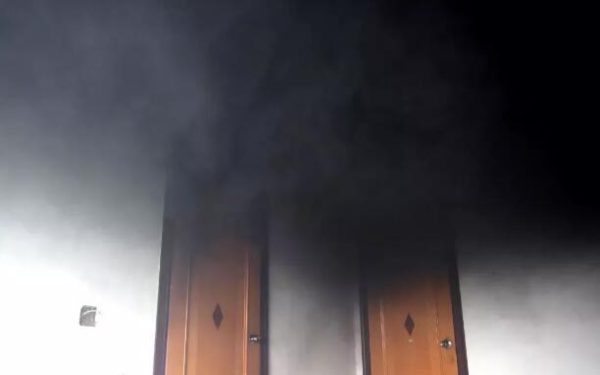
Among the gas sensitive sensors there are the following types.
(1) Gas-sensitive element sensors for flammable gases, including various alkane and organic vapour (VOC) gases, which are used in a large number of applications in range hoods, leak alarms and air fresheners;
(2) Carbon monoxide alarm, which are used in industrial, environmental, automotive and domestic applications to detect carbon monoxide leaks and incomplete combustion alarms;
(3) oxygen sensors, oxygen sensors are widely used in environmental protection, medical, metallurgical, transportation and other fields of great demand; (4) toxic gas sensors, mainly used to detect smoke, exhaust gas, exhaust gas and other environmental pollution gases.
Comparison of gas-sensitive smoke sensors and ion smoke detector
Fire smoke is a mixture of gas, liquid and solid particle groups with physical characteristics such as volume, mass, temperature and electrical charge.
An ionised smoke detector is a device that senses micro-current changes in smoke particles through voltage changes caused by an ionisation chamber equivalent to a smoke resistor. When smoke particles enter the ionisation chamber, it changes the ionisation state of the air in the chamber, thus macroscopically manifesting as an increase in the equivalent resistance of the ionisation chamber causing an increase in the voltage across the ionisation chamber, from which the smoke condition in the air is determined.
Gas sensitive sensors detect the composition of certain combustible gases in the air, so in terms of fire detection, gas sensitive sensors do not perform as well as ion sensors. Detects the level of combustible gases in the air. Effectively detects trace leaks of many combustible gases such as gas, LPG, natural gas and carbon monoxide. Suitable for industrial enterprises such as petroleum, chemical, coal, electric power, metallurgy and electronics, as well as gas plants, liquefied petroleum gas stations, hydrogen stations and other places where flammable gases are produced and stored.
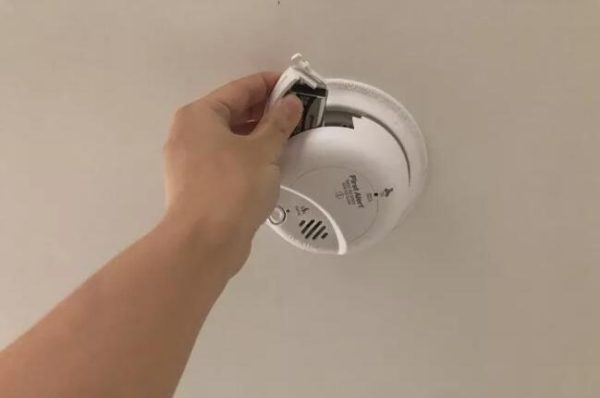
Installation of smoke alarms & How to choose the right smoke alarms?
First of all, if we want to install a smoke detector, we must choose some place where the gas will leak easily. Of course, we will choose the specific location.
Secondly, when the smoke detector detects a combustible gas with a specific gravity greater than that of air, the detector we choose should be installed about half a metre above the ground, with the sensor placed downwards is important. This makes it easier to test the accuracy of the instrument.
Thirdly, in order to use the detector correctly and effectively prevent problems with the detector, the following points should be noted.
1. do not place the smoke detector directly in areas affected by steam and fumes.
2. do not place in places with high air flow such as vents, ventilators, doors etc.
3, do not place it in a humid place, as this will affect the accuracy of the data
4. Do not place in places with strong electromagnetic fields, which will directly affect the normal operation of the smoke alarm
